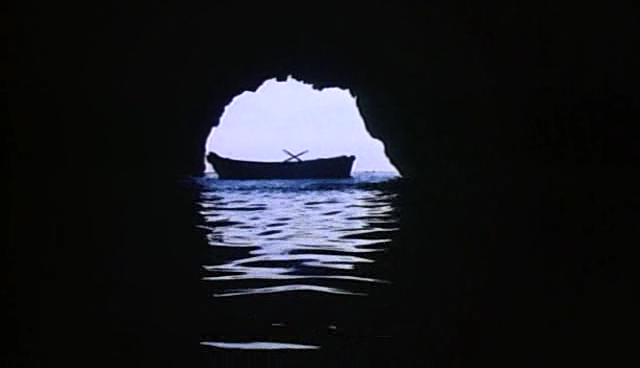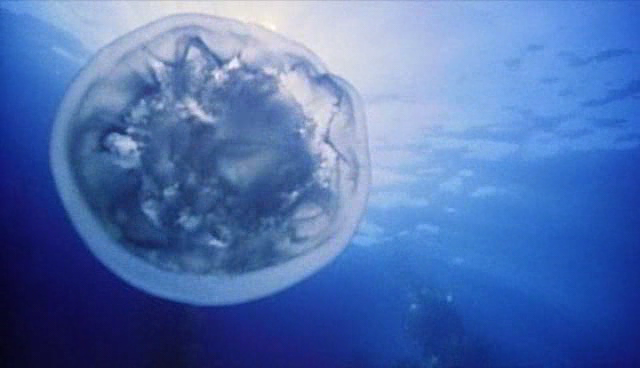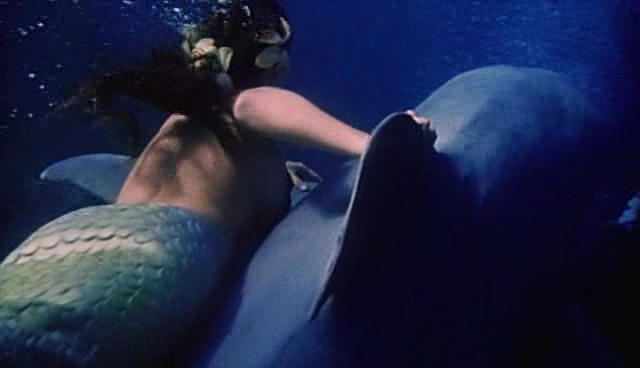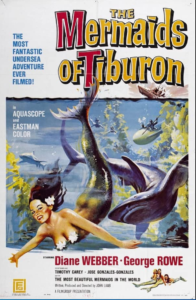|
Genres, Themes, Actors, and Directors:
Review:
The Mermaids of Tiburon — written and directed by underwater photographer John Lamb — is perhaps the only mermaid film (itself a limited sub-genre) to take place primarily off-land. Lamb does an admirable job evoking a naturalistic water environment for the gorgeous mermaids encountered by Rowe; it’s easy to believe that such a magical underwater haven — complete with luminous “flame pearls” nestled in gigantic clam shells — might actually exist. Unfortunately, the flimsy storyline about a competitive search for rare pearls (complete with a mano-a-mano fight between Rowe and Carey at the end) is cliched, badly acted, and best ignored altogether; it simply functions as a necessary framework for Lamb’s extensive mermaid footage. Meanwhile, the Cousteau-esque voiceover narration while Rowe is underwater is unintentionally humorous, and good for a few laughs — as when Rowe solemnly states, “The question occurred to me: just exactly how feminine was this mermaid?”, or notes to himself, “I was being drawn to this creature by something more than just a scientific interest.” (No kidding!)
Unfortunately, when Mermaids of Tiburon failed to generate much interest at the box office, Lamb decided to shoot additional footage of topless mermaids, re-releasing the film as The Aqua Sex; this later version — the one now widely available on DVD — is little more than shameless soft-core porn, with buxomy starlets swimming nearly naked (in seaweed “bikinis”), and green flippers substituted for mermaid tails Lamb apparently wanted viewers to have visual access to the women’s curvy behinds, but this decision ultimately makes them look more like swimming strippers than mermaids. If you do decide to seek out this camp classic, make sure to watch the original version, with playmate Diane Webber as Queen of the Mermaids — she’s infinitely more alluring in her bra-shells and mermaid tail than the topless woman replacing her in Lamb’s updated “audience pleasing” version.
Redeeming Qualities and Moments:
- Some beautiful imagery, both above and below water



- Richard LaSalle’s haunting score
Must See?
No, though you may be curious to check it out once. Listed as a Camp Classic in the back of Peary’s book.
Links:
|




One thought on “Mermaids of Tiburon, The (1962)”
First viewing. Skip it. Can’t imagine what would persuade Peary to include this title (other than the naked women).
The version I saw was billed as the ‘nude version’. Aside from a whole lot of footage of the breasts of women swimming underwater, there’s not much to this thing. It doesn’t even qualify as porn in any way since none of the women show any kind of sexual interest in Rowe (who is decidedly good-looking); their group-intent is clearly maternal and their only aim is to protect him (even if they may also be subliminally ‘curious’). The resultant effect is something like the most lethargic Russ Meyer film ever!
It’s certainly odd that only a few of the women have mermaid tails and none of the others do. Budget concerns?
I suppose, in a way, there could be an argument for this film qualifying as ‘hetero camp’ but I don’t even really see that. Its value as regular camp is just about zero.
Ultimately there are about two ‘action sequences’ but the film is largely ponderous – with way-too-many repetitive underwater scenes of the mermaids following Rowe or vice versa.
Apparently the film attempted to score favor largely among US military bases. With the amount of breast footage on display, that makes sense.